
Human Reproduction Open
Scope & Guideline
Shaping the landscape of obstetrics and gynecology.
Introduction
Aims and Scopes
- Assisted Reproductive Technologies (ART):
The journal covers advancements and outcomes related to ART, including in vitro fertilization (IVF), intra-cytoplasmic sperm injection (ICSI), and the impact of various stimulation protocols on reproductive success. - Endometriosis and Reproductive Health:
Research on endometriosis is a significant focus, encompassing its pathophysiology, impact on fertility, treatment strategies, and the role of endometrial health in reproductive outcomes. - Genetics and Reproductive Health:
The journal explores genetic factors influencing fertility, congenital disorders, and the genetic basis of reproductive conditions, providing insights into personalized reproductive medicine. - Environmental and Lifestyle Factors:
Studies examining the effects of environmental exposures, dietary patterns, and lifestyle choices on reproductive health are prevalent, highlighting the interaction between health behaviors and fertility. - Psychosocial Aspects of Reproduction:
Research addressing the psychological and social dimensions of infertility, including the emotional impacts of ART, is included, reflecting the multifaceted nature of reproductive health. - Reproductive Epidemiology:
The journal publishes epidemiological studies that investigate the prevalence and risk factors associated with reproductive health issues, contributing to public health knowledge.
Trending and Emerging
- Impact of COVID-19 on Reproductive Health:
A significant increase in research addressing the implications of the COVID-19 pandemic on fertility, ART outcomes, and patient management reflects the need for understanding how global health crises affect reproductive practices. - Integration of Artificial Intelligence in Reproductive Technologies:
The emergence of artificial intelligence applications in embryo selection and fertility treatments is a growing theme, indicating a trend towards leveraging technology for enhanced clinical decision-making. - Focus on Male Reproductive Health:
There is a noticeable increase in studies addressing male infertility, sperm quality, and the broader implications of male reproductive health, marking a shift towards a more balanced view of reproductive issues. - Personalized Medicine in Reproductive Health:
Research exploring genetic, epigenetic, and individualized approaches to fertility treatment is gaining traction, reflecting a trend towards tailored reproductive health strategies. - Holistic Approaches to Fertility Treatment:
An increasing number of studies are adopting holistic perspectives that consider psychological, social, and lifestyle factors in conjunction with medical treatments, demonstrating a comprehensive approach to reproductive health.
Declining or Waning
- Traditional Fertility Treatments:
Research centered on conventional fertility treatments is less prominent compared to innovative ART techniques, indicating a shift towards exploring more advanced reproductive technologies. - Generalized Fertility Awareness Campaigns:
While fertility awareness remains important, the focus on broad, generalized campaigns has diminished in favor of more targeted interventions that address specific populations or conditions. - Historical Perspectives on Reproductive Health:
Publications discussing historical or purely theoretical aspects of reproductive health have become less frequent, as the journal emphasizes empirical research with direct clinical implications. - Simple Nutritional Studies in Isolation:
Research that solely examines basic dietary factors without considering their interactions with reproductive technologies or health conditions has waned, reflecting a preference for more integrated approaches.
Similar Journals
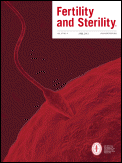
FERTILITY AND STERILITY
Exploring breakthroughs in reproductive medicine.Fertility and Sterility is a prestigious peer-reviewed journal dedicated to the fields of obstetrics, gynecology, and reproductive medicine. Published by Elsevier Science Inc, this journal has been a cornerstone of scientific discourse since its inception in 1950 and is set to continue its influential coverage of cutting-edge research until 2024. Boasting an impressive impact factor, Fertility and Sterility is ranked among the top-tier journals in its category, holding Q1 status in both Obstetrics and Gynecology and Reproductive Medicine. With Scopus rankings placing it in the 97th and 96th percentiles respectively, the publication serves as a vital resource for researchers, clinicians, and students who seek to advance their understanding of fertility issues and reproductive health. Although it does not currently offer open access options, the journal remains committed to disseminating high-quality research and innovative solutions to the complex challenges in reproduction, empowering professionals and scholars to make meaningful contributions in their fields.

Animal Reproduction
Innovating insights into animal reproductive health.Animal Reproduction is a premier open-access journal published by the Brazilian Coll Animal Reproduction, focusing on the dynamic field of reproductive biology within both veterinary science and animal husbandry. Established in 2004, the journal has rapidly gained prominence, securing a Q2 ranking in both Animal Science and Zoology as well as veterinary disciplines as of 2023. With a growing impact factor and an engaged readership, Animal Reproduction serves as a vital platform for researchers, professionals, and students seeking to disseminate and gain insights into the latest studies and innovations in animal reproductive health and technology. Based in Brazil, the journal's content spans a wide array of topics essential for advancing the scientific understanding of reproduction in animals, thus contributing to improved practices in veterinary medicine and livestock management. The journal is indexed in major databases such as Scopus, ensuring that the research published is accessible to a global audience. Whether you're a seasoned researcher or a student looking to deepen your knowledge, Animal Reproduction is indispensable for anyone engaged in this critical area of study.

Reproductive Medicine
Connecting Ideas, Cultivating Solutions in Reproductive HealthReproductive Medicine is an esteemed open-access journal published by MDPI, focusing on the latest research and advances in reproductive health, fertility, and assisted reproductive technologies. With its E-ISSN of 2673-3897, the journal aims to provide a platform for researchers, clinicians, and healthcare professionals to disseminate their findings, share innovative practices, and engage in scholarly discourse. Situated in Basel, Switzerland, Reproductive Medicine emphasizes a multidisciplinary approach, exploring biological, clinical, and psychological aspects of reproductive health. Although the journal is in the early stages of establishing metrics such as H-index and Scopus rankings, its open-access model enhances accessibility, allowing for a broad dissemination of knowledge. Committed to fostering advancements in the field, Reproductive Medicine is essential for those seeking to stay at the forefront of reproductive health research.

International Journal of Fertility & Sterility
Pioneering Research in Fertility and SterilityThe International Journal of Fertility & Sterility, published by ROYAN Institute, is a leading academic platform dedicated to advancing knowledge in the fields of obstetrics, gynecology, and reproductive medicine. With an ISSN of 2008-076X and an E-ISSN of 2008-0778, this Open Access journal has been making significant contributions to the scientific community since its inception in 2007. Based in Tehran, Iran, the journal showcases rigorous research and promotes interdisciplinary collaboration, addressing critical topics related to fertility, sterility, and reproductive health. As of 2023, it holds an impressive Q2 ranking in Obstetrics and Gynecology and a Q3 ranking in Reproductive Medicine, underscoring its relevance and impact in the academic sphere, with Scopus ranks placing it at #67 in Obstetrics and Gynecology and #32 in Reproductive Medicine. The journal's commitment to accessibility and quality is reflected in its global readership, making it an essential resource for researchers, healthcare professionals, and students seeking to enhance their understanding of fertility issues and reproductive technologies.

ANIMAL REPRODUCTION SCIENCE
Exploring the Science Behind Animal ReproductionANIMAL REPRODUCTION SCIENCE, published by Elsevier, is a leading journal dedicated to the field of animal reproduction and developmental biology. With an ISSN of 0378-4320 and an E-ISSN of 1873-2232, it serves as a vital resource for researchers, professionals, and students interested in advancing their understanding of reproductive mechanisms across various species. The journal has been recognized for its high-quality contributions, achieving a Q1 ranking in Animal Science and Zoology and showcasing its significant impact in the areas of Endocrinology and Veterinary Medicine as per the 2023 category quartiles. Covering a wide range of topics from reproductive physiology to genetic implications, this journal not only highlights innovative research but also fosters interdisciplinary dialogue in the rapidly evolving world of animal science. Though not currently offering open access, it remains a crucial platform for disseminating pivotal research findings from across the globe. With its rich history dating back to 1936, ANIMAL REPRODUCTION SCIENCE continues to drive excellence in animal reproduction studies, positioning itself at the forefront of the field, and solidifying its relevance in both science and industry.
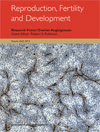
REPRODUCTION FERTILITY AND DEVELOPMENT
Innovating the future of reproductive health and biological development.Reproduction, Fertility and Development, published by CSIRO Publishing, is a prestigious journal that has been at the forefront of research in the fields of reproductive science, developmental biology, and related disciplines since its inception in 1989. With an ISSN of 1031-3613 and an E-ISSN of 1448-5990, this journal serves as a vital platform for disseminating innovative findings and methodologies that advance our understanding of reproductive processes and development in a variety of organisms. The journal is indexed in prominent databases, exhibiting a solid standing with a Q3 quartile ranking in both Animal Science and Zoology and Biotechnology, and covering 2023 rankings in multiple related categories. Operating from Australia, Reproduction, Fertility and Development embraces a commitment to enriching scholarly communication and fostering collaborative research efforts. Its focus on high-quality, peer-reviewed articles makes it an essential resource for researchers, professionals, and students seeking to stay abreast of the latest advancements and pivotal discussions in reproductive medicine and developmental biology.

JOURNAL OF REPRODUCTION AND DEVELOPMENT
Connecting disciplines for groundbreaking discoveries.JOURNAL OF REPRODUCTION AND DEVELOPMENT, published by the SOCIETY REPRODUCTION & DEVELOPMENT-SRD in Japan, is a leading peer-reviewed journal dedicated to advancing the field of reproduction and development in animal sciences. With a notable impact factor reflected in its prestigious Q1 Quartile ranking in Animal Science and Zoology, the journal aims to disseminate cutting-edge research that explores the complexities of reproductive biology, developmental processes, and their implications for agriculture and biodiversity. This journal invites contributions that span multidisciplinary interests, thereby facilitating the integration of scientific knowledge and practical applications. Researchers, professionals, and students can benefit from the insights shared within its pages, as it strives to foster collaboration and innovation in the field. The journal’s comprehensive scope and esteemed reputation, underscored by its Scopus rank of #115 out of 490 in the category, make it an invaluable resource for anyone invested in the study of reproduction and development.
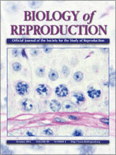
BIOLOGY OF REPRODUCTION
Shaping the Future of Reproductive ResearchBIOLOGY OF REPRODUCTION is a premier journal published by Oxford University Press Inc, dedicated to advancing research in the fields of reproductive biology, cell biology, and reproductive medicine. With an impressive impact factor and a strong ranking as Q1 in reproductive medicine and miscellaneous medicine, as well as Q2 in cell biology, this journal offers a vital platform for disseminating innovative findings and pivotal studies that shape our understanding of reproductive processes. Since its inception in 1969, BIOLOGY OF REPRODUCTION has become a key resource for scientists, clinicians, and students alike, providing insights that drive the future of reproductive health and research. Although not an open-access publication, it remains a respected authority, reflecting a commitment to high-quality peer-reviewed articles. The journal's comprehensive scope includes molecular and cellular aspects of reproduction, reproductive health, and associated technologies, making it indispensable for professionals looking to stay at the forefront of breakthroughs within the field.
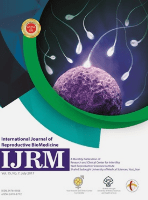
International Journal of Reproductive Biomedicine
Exploring breakthroughs in reproductive science for a healthier future.The International Journal of Reproductive Biomedicine, an esteemed publication by SHAHID SADOUGHI UNIVERSITY OF MEDICAL SCIENCES, serves as a pivotal platform in the fields of obstetrics and gynecology as well as reproductive medicine. Established in 2011 and transitioning to an open access model in 2015, this journal facilitates the dissemination of innovative research and critical findings to a global audience, particularly focusing on advancements in reproductive health and biomedicine. With an impact factor reflective of its commitment to high-quality scientific inquiry, the journal has achieved a notable ranking of Q3 in both its categories for 2023, contributing to its growing influence within the academic community. Researchers and professionals benefit from its broad scope, which encompasses a range of topics essential to reproductive health, thus fostering a rich exchange of knowledge. The journal's accessibility allows students and professionals alike to engage with the latest findings and contribute to ongoing discussions within this vital field of study.
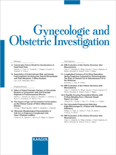
GYNECOLOGIC AND OBSTETRIC INVESTIGATION
Transforming Women's Health Knowledge into PracticeGYNECOLOGIC AND OBSTETRIC INVESTIGATION, published by KARGER, is an influential journal dedicated to advancing the fields of obstetrics and gynecology. With an ISSN of 0378-7346 and E-ISSN 1423-002X, this esteemed publication has been disseminating pivotal research since 1895 and continues to serve as an authoritative source through its convergence until 2024. Renowned for its rigorous adherence to academic standards, it stands in the Q2 category for both Obstetrics and Gynecology and Reproductive Medicine as of 2023, reflecting its quality and impact within the scientific community. With Scopus rankings highlighting its commendable positions—Rank #66 in Obstetrics and Gynecology and Rank #31 in Reproductive Medicine—it is an essential resource for researchers, professionals, and students alike, fostering a deeper understanding of women’s health issues and innovative care practices. Despite not being an open-access journal, its contributions significantly influence current and future directions in clinical and translational research.